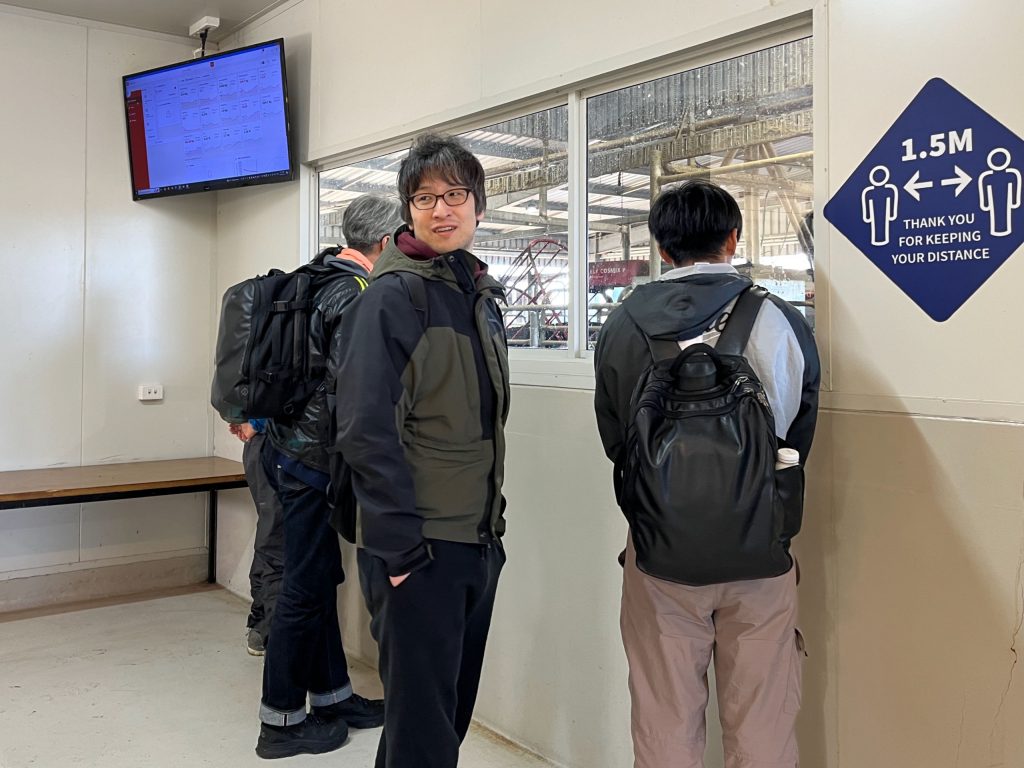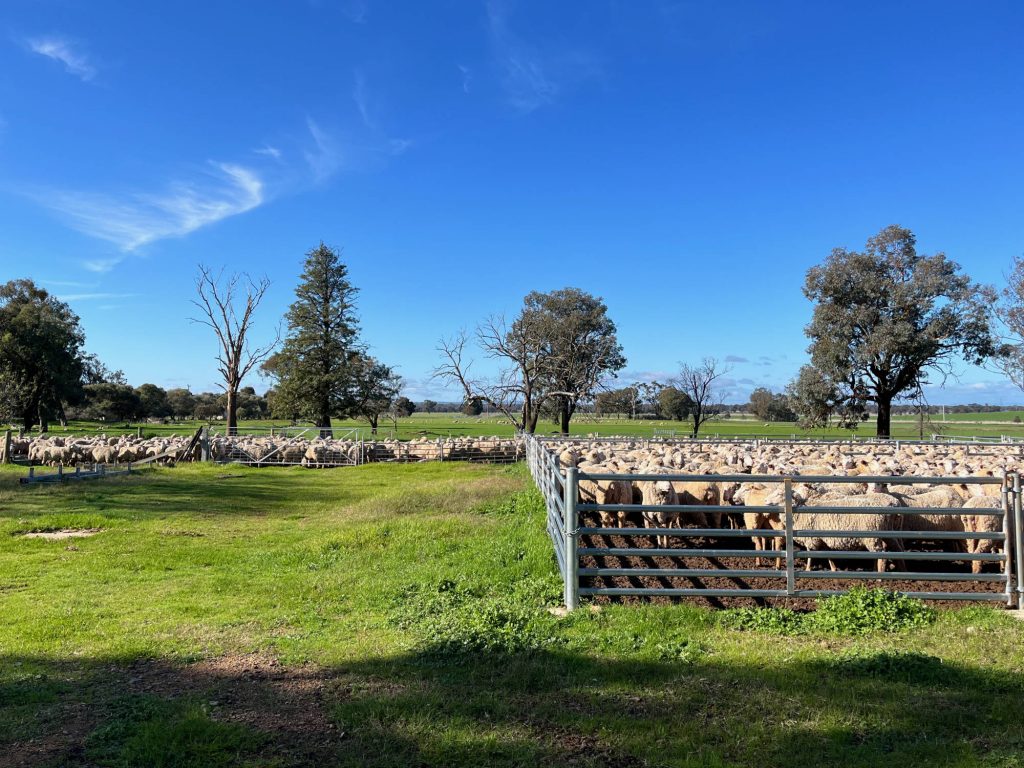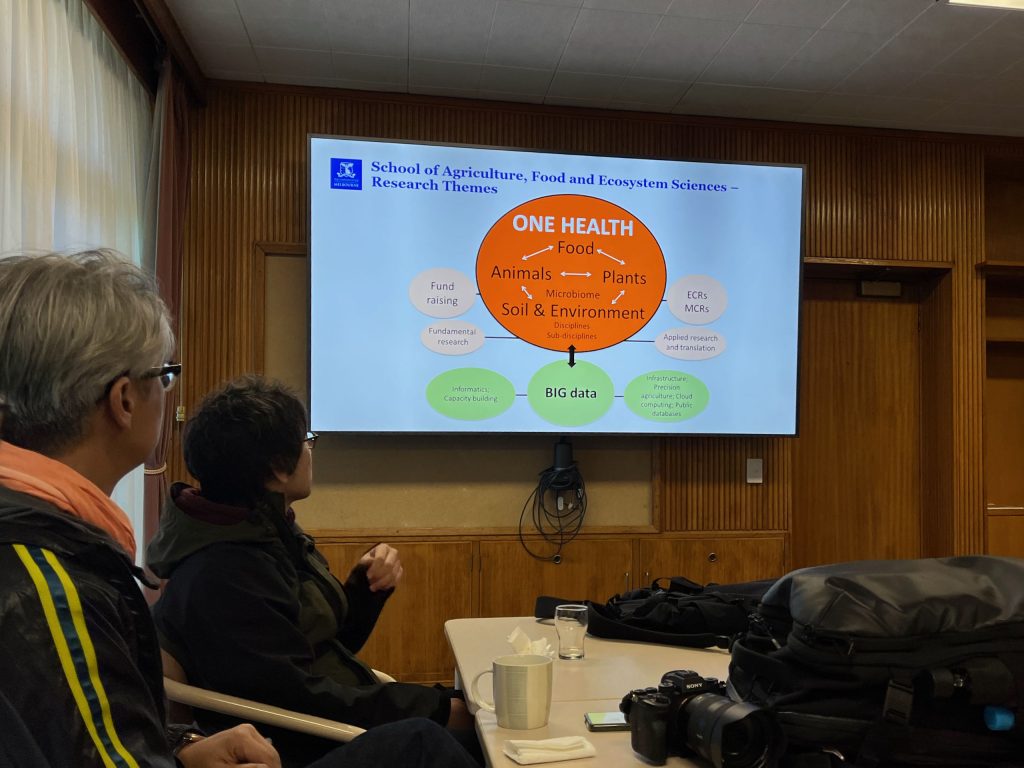19-20 June 2023
Sony CSL researchers from Kyoto and Tokyo labs (Yuichiro Takeuchi, Masatoshi Funabashi, Kotaro Jinushi, and Kousaku Ohta) spent two days at the Melbourne School of Design in June 2023, meeting University of Melbourne researchers from across three different faculties.
Day one started with the Sony crew meeting Hannah Gould and Rory Hyde (who both featured in Dialogue #1), as well as Hannah’s fellow Faculty of Arts researcher Samuel Holleran, and researchers from Faculty of Architecture, Building and Planning Dan Parker and Jason Thompson. (Do watch the recording of Dialogue #1 to get a sense of Hannah and Rory’s research.)
Of the other University of Melbourne researchers, Sam Holleran’s work concerns urbanism, urban politics and policy, and particularly cultures of citizen participation. Dan Parker’s addresses a different kind of design for participation: ‘more-than-human’ habitats, including architecture for owls and insects, using advanced visualisation and fabrication techniques. Jason Thompson’s work addresses complex systems, particularly around public health, mobility, urban design and urban form.



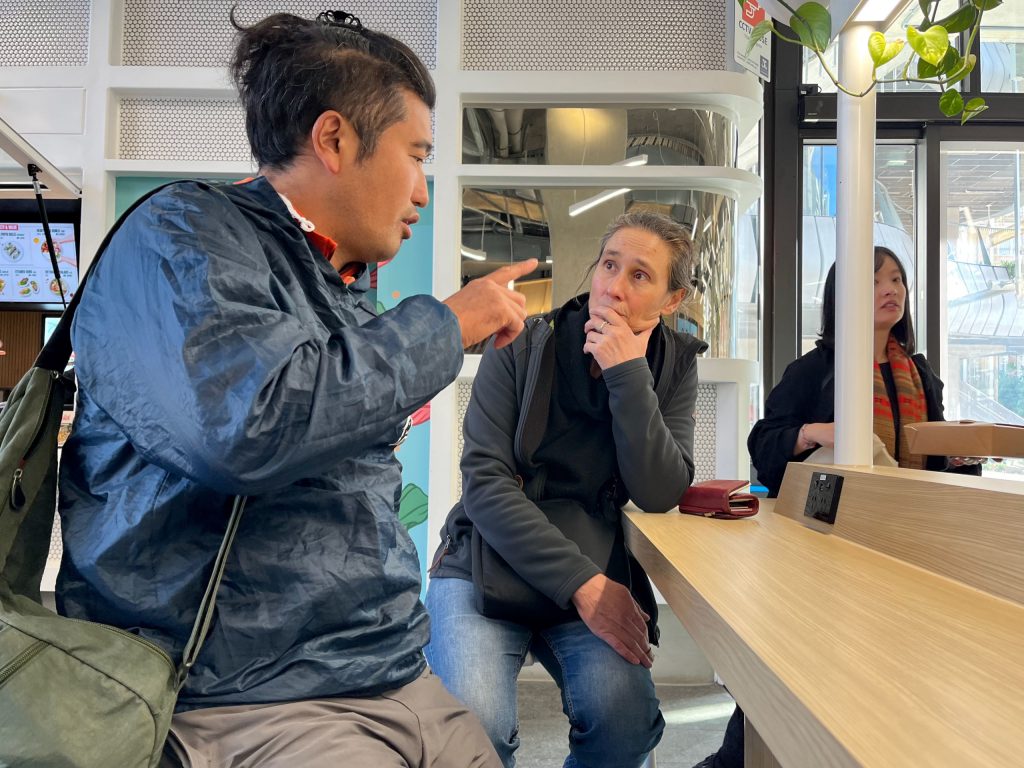
Meeting two introduced Melbourne School of Design researchers Nancy Ji, Katie Skillington, Natalies Miles, and James Helal. Nancy and Katie studied in Japan, and both took part in bamboo fabrication workshops in Kagoshima prefecture during 2023, organised by Dan Hill’s colleagues at Re:public. Katie’s work concerns circular materials and architectural design, and also teaches on the Master of Architecture E Studios, which address material cultures. Nancy runs the popular Japan Studio on the Master of Architecture, and also connects questions of materiality with local bioregional culture in Japan’s regions. James Helal’s research also addresses circularity and carbon, particularly via the Rephrame platform he is building; though as a Master of Construction Management tutor at MSD, he pursues questions of embodied carbon and lifecycle analysis with forensic detail. Natalies Miles also teaches at MSD, while pursuing a PhD into strategic design of social infrastructures, such as libraries, playgrounds, parks, museums, schools etc.
The tour continued with a visit to MSD’s NeXT Lab, introduced by coordinator Melissa Ihrareta, which is part of the school’s makerspace facilities, and which features advanced fabrication equipment allied to digital visualisation research and teaching, on augmented and virtual reality platforms.



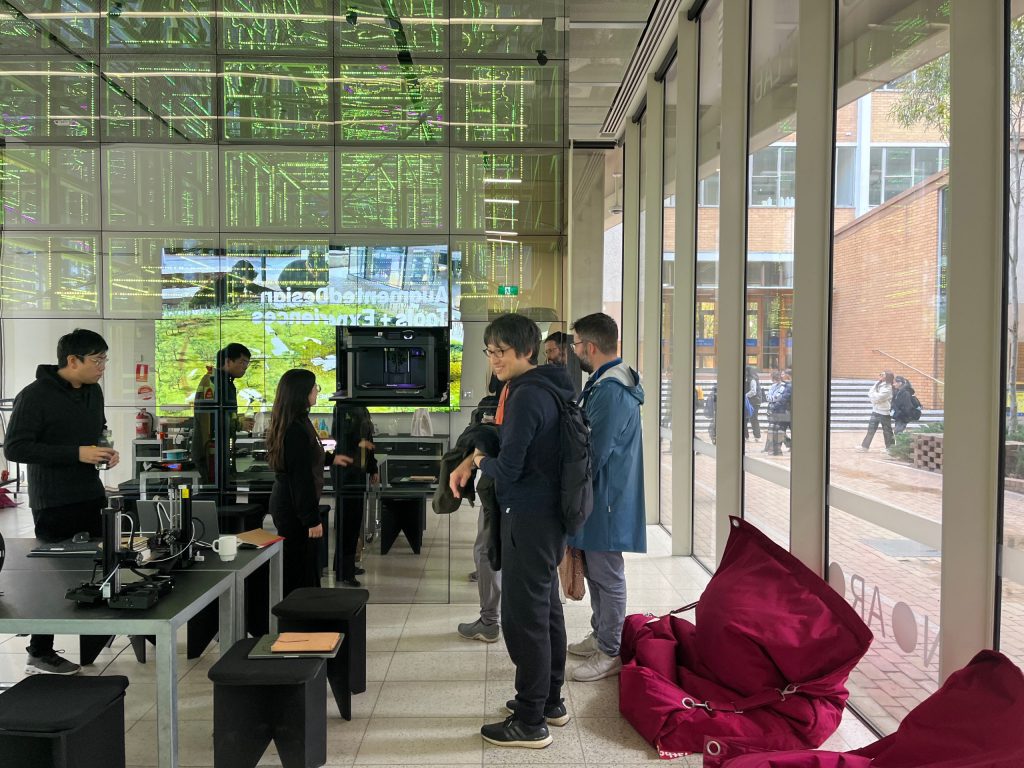
Next stop was the Faculty of Engineering and IT at the University’s Melbourne Connect building, to meet with Director Eduard Hovy. The team visited research labs across human-computer interaction and experience design, exploring material innovation in interface design as well as machine vision experiments. The team also met with the University’s Centre for Artificial Intelligence and Digital Ethics. On the way, the joint research group had a chance to see the University’s Australian Integrated Multimodal Ecosystem (AIMES) programme, installed at traffic intersections across the Carlton area of Melbourne.
AIMES, led by Professor Majid Sarvi—who featured in Dialogue #2—is a unique research facility, a partnership between the University, Victorian Government, local municipalities and technology companies, and enabling applied research projects running on live streets. As well as autonomous mobility experiments, AIMES is driving ‘green wave’-style bike lanes in Carlton, where multiple forms of sensors and cameras can discern a critical mass of cyclists or pedestrians and trigger traffic lights accordingly. This supports active transport like walking, cycling and rolling, with positive outcomes for urban sustainability, health and social fabric.

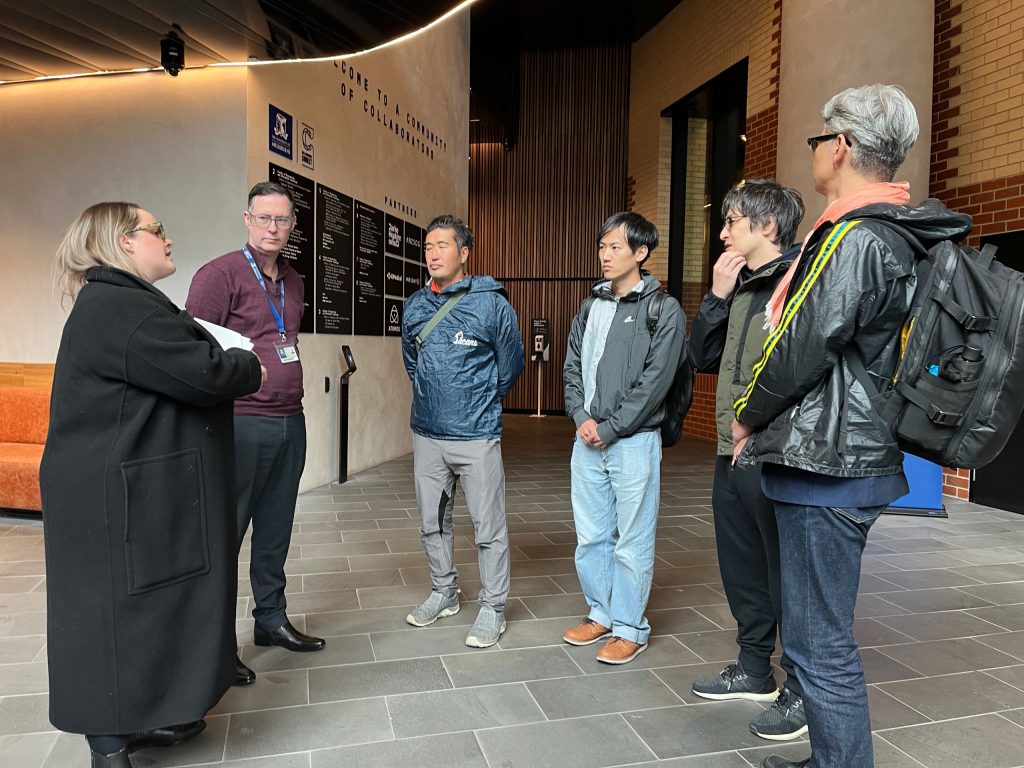
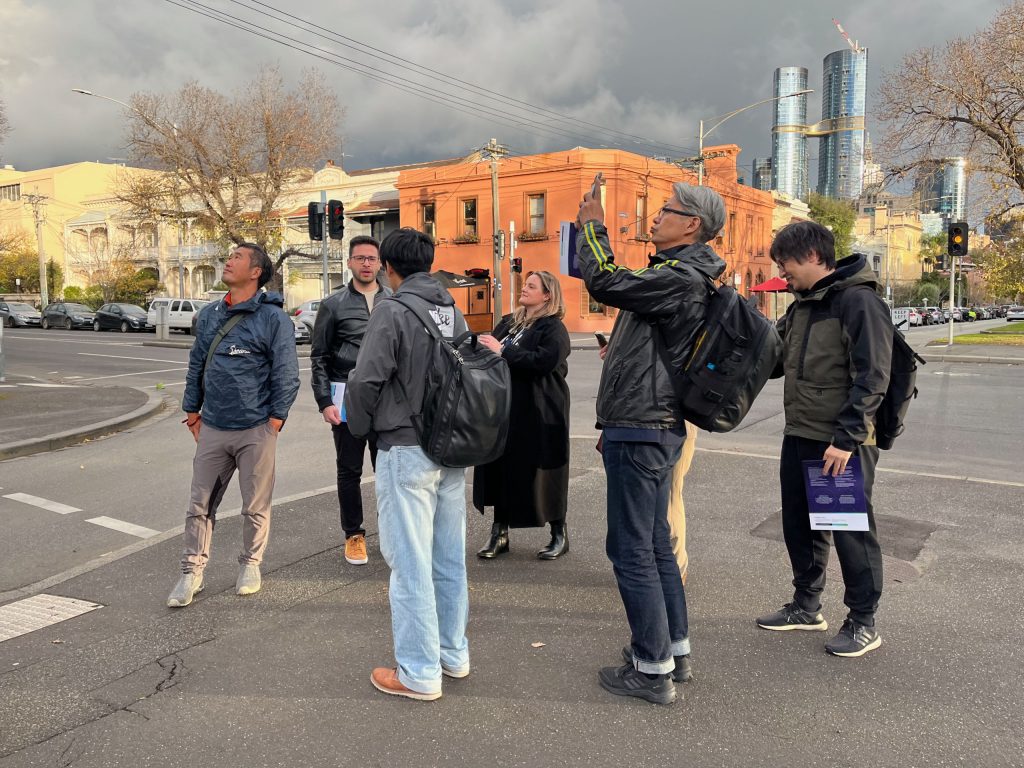
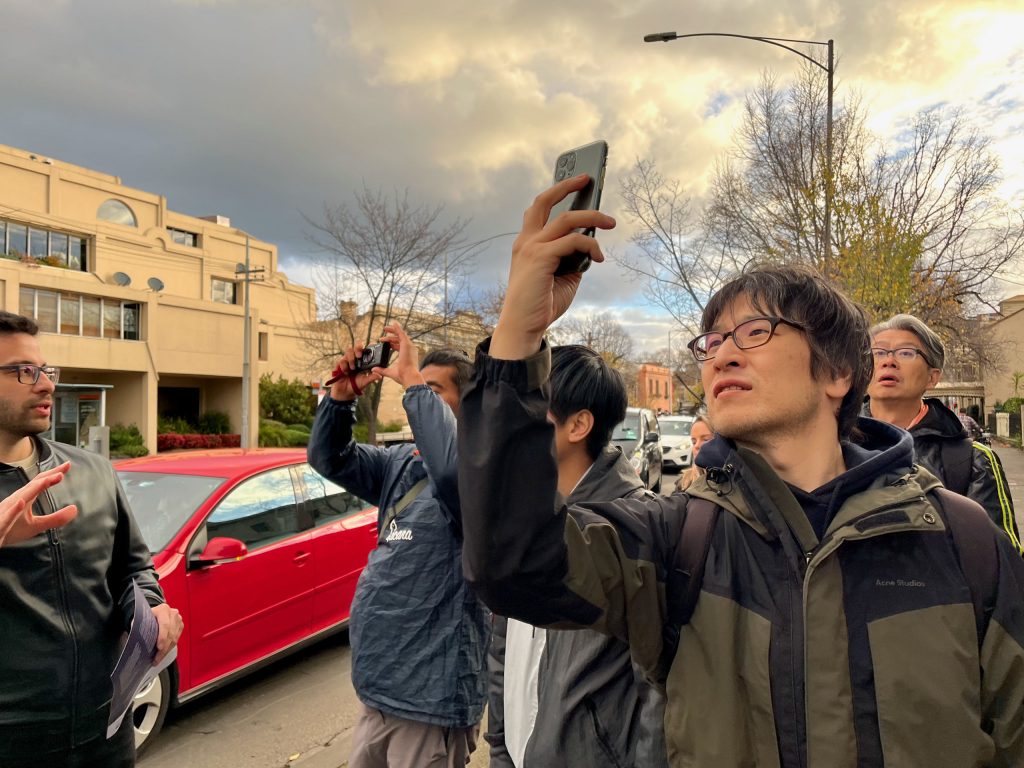
The second day of the visit saw the Sony CSL team, accompanied by Dan Hill, visit the University’s agricultural research centre at Dookie, in the Victorian countryside of the Goulburn Valley, a couple of hours north of Melbourne. An early morning train from Melbourne’s Southern Cross meandered north through beautiful countryside—with the Japanese contingent particularly interested in the kangaroos glimpsed outside the train’s windows—before arriving at the University’s vast campus at Dookie.
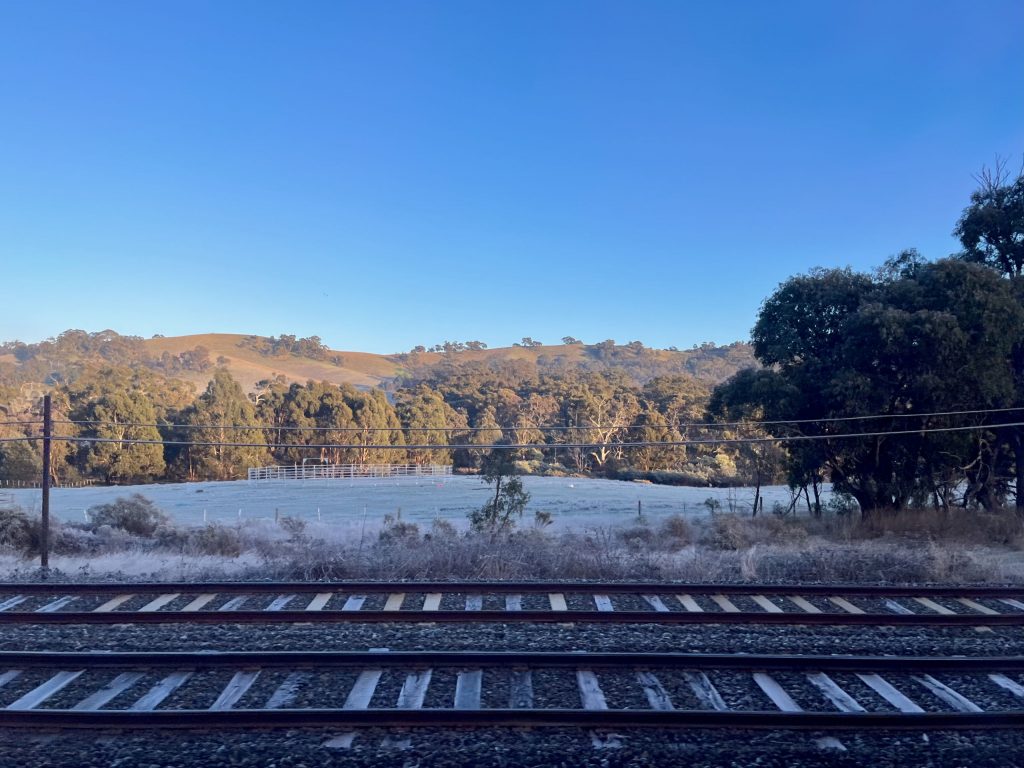
The Dookie campus is large: 2440 hectares of diverse agricultural experimentation, featuring multiple forms of farming, 5000 merino sheep, orchards, a robotic dairy, a winery, a natural bush reserve, and more besides. In the Sony CSL team, Masatoshi Funabashi leads research into ‘Synecoulture’, based around open system science and enhanced biodiversity, exploring how to produce crops that restore the healthy functions of ecosystems and human well-being. The team have demonstration experiments of synecological farming both in Japan, and the Sahel region of Africa. Masa-san was particularly interested to see the University’s research facility at Dookie, where he and the CSL team were able to compare notes with Dr. Jesse Beasley, Dookie director Assoc. Prof. Ros Gall, and other staff and researchers.
